Resources
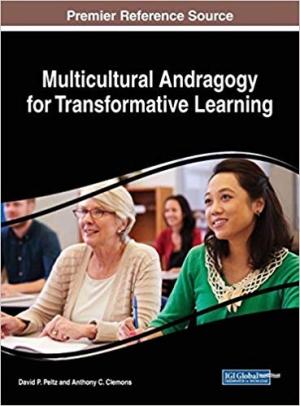
In the Foreword and the Introduction of Multicultural Andragogy for Transformative Learning, the editors lay out the goals and the structure of this multi-author volume. But the reader will not get past the first paragraph of the Forward before encountering one of many punctuation errors that plague the volume. In addition to multiple punctuation errors, some chapters contain so many spelling and phrasing errors that the reader is distracted from engaging with the content. Further, the quality of the research, the quality of the writing, and the author’s ability to support his/her assertions varies widely from chapter to chapter. The result is a collection of chapters that are very loosely connected, with little consistency in how each author engages with the intersection of multiculturalism, andragogy, and transformative learning. The volume is organized into three sections. The first provides the reader with the foundations for understanding the learning theories of andragogy and transformative learning and how both relate to culture. The second section examines andragogy and practice in a variety of cultural contexts. The final section describes “transformative multicultural andragogy” (xvii) in practice. While some chapters stand out as cogent and applicable, too many other chapters suffer from lack of editorial attention and guidance. The first section of the volume would most benefit from said guidance. Each chapter explains the theory of andragogy; many also describe transformative learning. Andragogy is also explained in detail in the Preface, making much (and in one case, most) of these initial chapters repetitive. Rather than re-explaining these theories, these chapters would be better spent connecting adult learning in various contexts to multiculturalism. Some of the chapters in sections two and three are valuable as stand-alone articles on their stated topics, but as a whole the chapters do not work together to enlighten the reader about multicultural andragogy as it relates to transformative learning. To be fair, the editors state that they “have set a broad scope for the theme” of exploring the intersection of culture, andragogy, and transformative learning (xx). However, only a few of the authors explore all three of these concepts. When a chapter in a volume is notable for addressing the stated topic of the volume, the scope of the volume is perhaps too broad. In the Preface and Conclusion, the authors state that “the primary focus of this text has been to elicit the connection between cultural perspectives and adult learning” (xxiv, 270), and in the Conclusion, they propose a new learning model representing the relationship between andragogy, transformation learning, and multiculturalism. What one would hope to learn from this volume is how they interact, not just that they do, so that the model can be tested and reproduced in an adult learning environment. The editors are correct that the relationships between these concepts should be explored and described, and that adult education would benefit from such work. However, Multicultural Andragogy for Transformative Learning lacks the focus and editorial oversight to accomplish that goal.
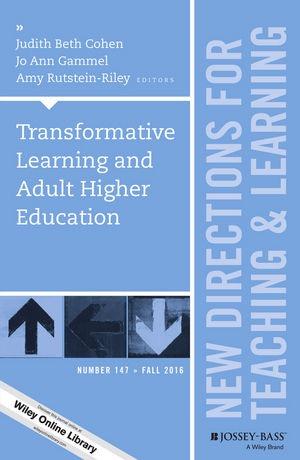
Transformative Learning and Adult Higher Education is a small anthology written by adult education practitioner-scholars in which they share diverse learning perspectives and practices utilized in universities for adult learners. The editors and writers of this volume describe creative experiences, unconventional perspectives, and unusual pedagogical methods in a variety of educational contexts that lead adults to experience learning that is transformative. A fundamental premise of the book is that genuine adult learning is synonymous with significant life change. The book’s animating notion is sociologist Jack Mezirow’s influential theory of Transformational Learning, found in his seminal work, Transformative Dimensions of Adult Learning (Jossey-Bass, 1991). Some acquaintance with Mezirow’s theory is necessary if one is to fully appreciate the book since each contributor builds on it or refers to it. According to Mezirow, transformative learning happens when three things take place in the life of the adult learner. First, an adult learner changes their understanding of themselves. Second, she or he revises their behavior. Third, he or she changes their approach to life (19). The contributors to the book pay homage to the groundbreaking ideas of Mezirow, but do not always locate transformative adult learning inside the limits of Mezirow’s definitions. Sometimes the writers expand the perspectives supplied by Mezirow in avant-garde and provocative ways. The book is composed of eleven short chapters each written by a different practitioner-scholar in which she or he shares the transformational learning that took place within a specific group of adult learners in a particular context. (For example Chapter 3 explores the learning that took place between female professors and female doctoral students in the advising process of working on their dissertations). The writer then usually shares the character of the learning process which catalyzed the transformative change. Typically, each chapter includes a description of the uniqueness of the population of adult learners the writer was involved with, each chapter gives a report of the qualitative study the contributor completed, and each chapter contains the writer’s reflections about the learning process and outcomes. The chapters are very different from one another, demonstrating the eclectic nature of the learning experiences and the diverse learners involved. A couple of examples of chapter content may reflect the variety and uniqueness of the adult learning described in the volume. Chapter 1 describes the learning journey of eighteen to twenty-eight-year-old emerging adult undergraduate students who struggle with learning differences (such as dyslexia). The chapter contributor, utilizing Mezirow’s theory and Marcia Baxter-Magolda’s stages of self-authorship (13), details the transformational process by which these students went from viewing themselves as intellectually diminished, and therefore inferior to their “smarter” peers, to being uniquely equipped for life, and therefore confident in engaging life. In this chapter transformative learning was expressed as overcoming a seemingly indomitable life challenge and going forward with determination and optimism. Chapter 2 presents a study of three black women educators: a portraiture of each woman’s transformative journey is given. One of these women had grown up as a Roman Catholic. Part of her transformational learning involved acknowledging the inadequacy of the Catholic faith for her and abandoning it in favor of a new expression of Christianity which she found generative and liberating. According to the writer of this chapter, transformative learning involved rebelling against her faith, abandoning an old and insufficient way of living, and embracing a new way of seeing the world. Adult transformative learning is often depicted in the eleven chapters as becoming aware of a harmful way of living and discarding it. The Editor-in-Chief, Catherine M. Wehlburg, wrote that this book regards transformative learning as a “‘rich metaphor’ for exploring the interactions and experiences of students and faculty in higher education” (3). She goes on to write that one will find “many examples of the richness of transformative learning” in this volume (3). I agree. The strength of the volume is its diversity in conceiving of transformative learning and describing some of its possible expressions. These conceptions and expressions are sometimes peculiar and idiosyncratic, but they are always creative and stimulate thought. I found that they beckoned me to stretch the boundaries of my own pedagogical creativity. Further, I found particular pedagogical practices described in the book as ones that I could use in my own teaching with a little adjustment to my context. The chapters are scholarly, concise, and easy to read. One is able to extract useful ideas without wading through lengthy, rambling prose. A weakness of the volume is that nearly every chapter addresses Mezirow’s chief ideas in such a way as to create the feeling of redundancy. The repeated recitation of those ideas is unnecessary and tiring. The seminary where I teach has a mission statement which expresses its intention to provide its students theological education that is characterized, in part, as “Christ-centered transformation.” Thus, I was drawn to this book about transformative learning with the hope that it would further illuminate my understanding of transformation inside the context of a confessional Christian institution. My seminary, as well as scores of schools with similar confessional commitments, finds it impossible to think about life transformation apart from particular content. For example, knowledge of the Christian Scriptures and the life of Jesus Christ are believed to be necessary catalysts for genuine life change. Transformative Learning and Adult Higher Education does not venerate any particular content as necessary for life transformation. Instead, this volume exalts process as the means of transformative learning. Transformation is made possible through the masterful facilitation of a process which is conceived without many definitive guidelines or boundaries. Teachers and scholars in confessional learning contexts will likely, therefore, find the conception of transformative learning contained in this book helpful but incomplete.
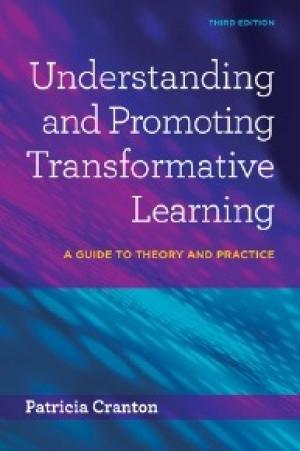
In the third edition of Understanding and Promoting Transformative Learning, Patricia Cranton provides new insights into the field of transformative learning. Cranton promotes transformative learning, addresses transformative learning theory, and offers strategies for the concept itself. The author examines and promotes transformative learning in multiple contexts: higher education, business industry, government, health professions, nonprofit organizations, and community development. Cranton traces the origin of the concept of transformative learning and then gives a full description of the theory from an integrative perspective. In doing so, she shows the reader that transformative learning takes place both individually and communally. A minor weakness of the book is its use of specialized psychological terminology; the reader unfamiliar with it may lose focus on the overall purpose of the book as they strive to understand the meaning of particular words and phrases. That said, the book is helpful for understanding transformative learning theory, practice, and strategy. These insights alone aid faculty in developing effective teaching strategies to advance student learning. In addition, the author shows not only the importance of the subject, but how it can be used in real life applications. This book is valuable because it focuses on the core of what it means to learn. At the forefront of this learning is an acknowledgement of various ways of knowing and the author provides examples of these. I was particularly drawn to the section that discusses dialogue, discourse, and support. This section of the book resonates with me because it fits into my own theory of critical pedagogy. The student should be impacted by learning in such a way that it transforms not only the learner, but the learner’s society as well. Understanding and Promoting Transformative Learning is particularly valuable for helping educators see their role in the learning process. The methodology described throughout the book leads to self-reflection, critical reflection, and thinking about how one’s teaching may fit into contemporary contexts. Furthermore, it converts the process of reflection into active participation in society. Additionally, the book discusses empowerment and the importance of dialogue to this process. This book is valuable in its demonstration of how dialogue is critical to transformative learning and can help the reader see how this affects student self-awareness and consciousness. Overall, I found this book to be a valuable asset for those interested in social justice and especially for teachers interested in transformative learning.
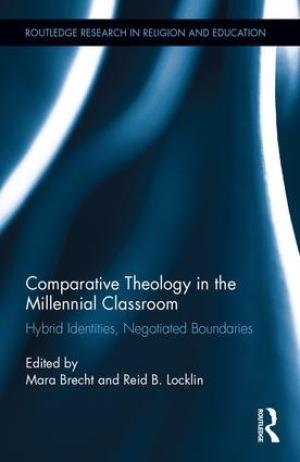
his is the fourth in the Routledge Research in Religion and Education series. The series editor provides a Foreword distinguishing between religious education as formation within religious institutions and the concern of the series, which is education about religion. In this context, the essays address comparative theology as a process and as a pedagogical method in primarily, though not exclusively, undergraduate classrooms. Editors Brecht and Locklin provide a concise, effective introduction which establishes an overview of the intersecting thematic components of the collection: comparative theology, particularly the “departure-and-return” model as developed by Francis X. Clooney, SJ., and ways in which the digital culture of the millennial generation impacts epistemology and identity. The fifteen essays are arranged in three sections. The well-placed first essay, by Judith Gruber, offers a postcolonial critique of the comparative theological model as implicitly essentialist. Essays in the second group address issues of identity raised by millennials and the nature of the millennial classroom in relation to comparative theology. Essays in the third section discuss hands-on examples and specific pedagogical practices. An afterword by Clooney, in which he identifies “six recurring issues” which he finds in the essays and addresses sequentially, concludes the volume. Clooney’s frankly personal account of his own context in developing the departure-and-return model and his rejoinder to the charge of essentialism bring the dialogue to a fitting end. The diversity of the collection is rich in both content and authorial voices, some of whom are well-established scholars and others of whom are emerging, most teaching in religious studies or theology departments at public or private North American universities, though the balance leans toward Roman Catholic institutional affiliations. Editors Brecht and Locklin note that this collection is the fruit of a Wabash Center teaching workshop. The robust range of reflection invites readers into the feel of a working group of teacher/scholars who share a concern for facilitating transformative learning in the religion or theology classroom, yet who address this concern and comparative theology’s relevance to the millennial context in quite distinct ways. A brief sampling demonstrates the range of perspectives authors develop: soteriological privilege (Brecht); Muslim theology of tawhid (Hussain); embodiment and material culture (Gasson-Gardner and Smith); storytelling as a pedagogical method of African Traditional Religions (Aihiokhai); comparing dharma and moksha, works and faith, ethics and spirituality (Yadlapati); a voluntary female Jewish-Muslim textual study group (Golberg); and use of film in an online context (Sydnor). As Jeanine Hill Fletcher writes in her essay, “the work of the comparative theology classroom shares in this important work of shaping citizens in a multifaith world toward tolerance, appreciation, meaningful relationships, and the common good” (149). The same may also be said for religious studies classrooms. Many teachers of religion who are neither theologians nor comparativists by academic training will nevertheless find this collection useful and even inspiring for their pedagogical reflection and practice.
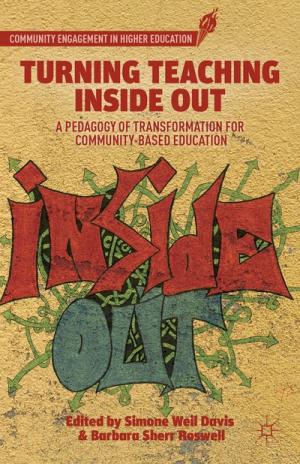
Debates about the purpose and quality of education tend to center on evaluative tools and the number of persons successfully completing courses of study. The assumption being that education’s primary purpose is to prepare a workforce for a competitive market place. These and several other assumptions about the process and goals of education are challenged in the encouraging text Turning Teaching Inside Out: A Pedagogy of Transformation. This collection of essays written by participants in the Inside Out Prison Exchange Program describe and analyze a pedagogy that in form, content, and process reflects the educational goals of developing critical thinking skills, integrative learning for comprehensive application, and empowerment. For those who value education as the forming of persons who can positively contribute to and impact society, this program is an affirmation of the promise and power of liberative pedagogies and service education programs. The Inside Out Prison Exchange program brings together students from universities and prisons to study and learn, initially about the criminal justice system and its social implications, but now encompassing a wide range of subjects: sociology, philosophy, performance art, social work, literature, and law. A liberative model based on the seminal work of Paolo Freire, students and teachers come together across multiple lines of difference to critically reflect on the social issues that impact and contribute to this nation’s alarming incarceration rate, especially of people of color. Utilizing a dialogical methodology, questions are raised, not only about the content of issues, but also about the very process of learning. A space of respect and mutuality is created through icebreakers and small group work, the negotiation of norms, and expectations. Learning is engaged with the basic assumption that all present are both teacher and student. Questions and dialogue lead to strategies for change and when the semester is over, many commit to the ongoing work of community education through projects that expand their experience to incorporate institutional decision makers, politicians, family members, and community organizations dedicated to improving the criminal justice and educational systems. These think tanks and policy development groups lead to praxis, concrete engagement of the systems that impact and contribute to the violence, and social integration explored in the class setting. The ripple effect moves beyond the prison walls and even the collaboration necessary to run this program and expand it internationally are a product of the mutual and collaborative relationships formed through this Inside Out transformational pedagogy. The essays include historical analysis of the current prison industrial complex, the personal transformation that humanizes social service professionals, the community and political organizing of alumni and the different contexts in which this model has been successfully applied, as well as articles about research methodologies and variations and outgrowths of the original program. The appendices helpful, offering models of the activities and frameworks utilized by the program. These first hand reflections provide rich material for analysis and application useful for all educators. I was left wanting more detail about the setbacks and challenges, especially as the program was replicated and expanded to different contexts. Some strategies are suggested (for example, start the collaboration with people on the ground not necessarily administration [30]) that suggest lessons learned through hard experience and I can only imagine the number of obstacles overcome given the stringent limits set by this particular context. This text invites educators to reconsider or renew their commitment to personal and social transformation. It is an important resource for those seeking to strengthen and improve education everywhere from the inside out.
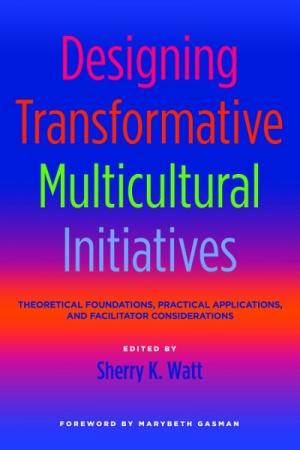
Sherry K. Watt has assembled talented “conscious scholar practitioners” to address the growing need to design university policies, programming, and classroom pedagogies that address difference. This book addresses both the theoretical and practical aspects of multicultural teaching. As the preferred term “conscious scholar practitioners” suggests, both aspects are vital for developing multicultural policies and teaching practices. Watt explicitly places the book within the model of radical pedagogy most commonly associated with Paulo Freire’s Pedagogy of the Oppressed and bell hooks’ conception of teaching for liberation. The challenge of the book is to translate the theoretical principles of this tradition into policies that shape institutions and to provide practical models for how these principles can be actualized on today’s university campuses. The book is organized into four parts. The first part lays out the guiding principles for transformative multicultural initiatives. Here the main terms found throughout the volume are laid out clearly and the general theoretical ground is set. Part two moves to the practical question of design and provides helpful tools that should be used during the beginning phases of design as well as how best to evaluate such programs at their conclusion. Since assessment is often difficult to conceive of in the midst of radical pedagogical models, this section struck me as particularly helpful for navigating such a pedagogy within the managerial space of the contemporary university. Part three provides six case-studies in which conscious scholar practitioners present their own programs. This is a valuable section because of the examples given, but perhaps most importantly because they offer valuable lessons learned in their unflinching self-analysis of their programs. Part four provides important reflections on the institutional challenges that exist for those trying to carry out the programs advocated and modeled in the volume. While reading this chapter I had hoped for more constructive advice for dealing with the various forms of institutional and individual resistance to multicultural initiatives, but many of the stories in these chapters highlight the main forms of resistance to radical pedagogical models in the contemporary university. This volume is not specifically directed towards educators in theology and religious studies. However, all of the chapters are intended to be adaptable to various contexts. For those scholars who want to deepen and center difference in their classroom and across their university this book strikes me as incredibly valuable. For departments of theology and religious studies seeking to form stronger links with other departments, staff members, and administrators, this volume can provide a common vocabulary and methodology. The volume may in fact be most valuable as a model that can facilitate interdisciplinary work as special attention is paid to multicultural initiatives within the physical and mathematical sciences. These fields are often neglected in radical pedagogy models, but as theologians and scholars of religion are encouraged to carry out more interdisciplinary teaching this volume may help frame such work within radical pedagogical models.
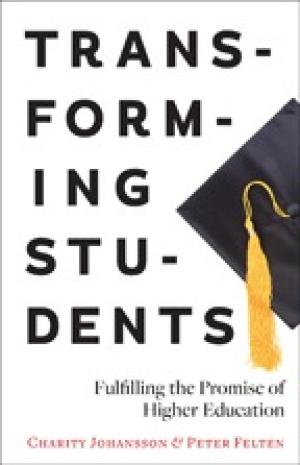
North American faculty often teach and work in milieus in which the value of a liberal arts education is continuously in question. Economic realities of the last decade have prompted administrators, faculty, and practitioners to think more deeply about the sustainability of liberal arts institutions in general. And, in some contexts, the transition to increasingly corporate models for higher education leadership means that terms such as customer service, brand, and product are gaining utility in order to emphasize the value of a liberal arts degree in a competitive market. Charity Johansson and Peter Felten recognize these trends and contend that a liberal arts education should provide spaces for college students to learn how to embrace change and encounter the unknown: faculty should be emphasizing a transformative learning process rather than a informative one that offers facts but does not push students to develop abilities to deal with complex variables after graduation. Johansson and Felten argue that a university can provide an environment conducive to transformative learning by clarifying its purpose and by developing a student’s capacity and opportunity for positive change (1). Johansson and Felten’s research is grounded in the recent literature on transformative learning in the field of adult education; Transforming Students applies these concepts and theories to young adults with the intention of emphasizing the practices and theories in which transformation can readily emerge in higher education (4). According to the authors, the content of transformative learning begins with disruption and is followed by reflective analysis, verifying and acting on one’s new understanding of the world, and integrating what one has learned and practiced into everyday life (3). A sharp contrast is drawn between informative and transformative teaching and the various pedagogical practices that characterize them. Administrators, staff, and faculty have a responsibility to not only provide a safe, welcoming space for transformative learning to occur (which includes disruption and dissonance), but they also ought to respond holistically, meaningfully, and with integrity to the spontaneous actions of students who are “find[ing] their way along their journey” (89-90). The interplay of the individual and community in this transformative learning process will effect change because “the ultimate outcome of this type of learning is action in community” (82). If taken seriously by the educator and the institution, transformative learning has the potential to change both the institutional context and the broader community. Johansson and Felten do not speak explicitly about religious studies or theological education, but an adept reader can easily apply their theory of transformative learning to any classroom context. With its emphasis on mentoring and creating safe spaces for openness, disruption, and critical reflection, this text prompts readers to reflect deeply about their role as educators, practitioners, or co-curricular programming staff. The cited research is qualitative rather than quantitative; much of the evidence used to support Johansson and Felten’s argument is anecdotal in nature from the context of Elon University. This may be seen as a lacuna in the evidence to some readers, but overall the anecdotal evidence provides a clear, precise thesis that is rooted in students’ experiences of transformation during their time in college. Though other texts may need to be referenced for an in-depth, quantitative approach to higher education research, Transforming Students is especially helpful for those who want to read a short, accessible text that theoretically grounds pedagogical styles and higher education practices as transformational to “prepare students for a life of continuous change and development” (2). This book is not a list of best practices across the landscape of liberal arts institutions – though some best practices from Elon University are used as examples – but rather it serves as a convincing argument for transformative learning as a crucial paradigm for pedagogy, practice, and the holistic institutional mission of liberal arts colleges and universities. According to Johansson and Felten, transformative learning does not have to hang in the balance: there are indeed practices and methods that provide intentional spaces and opportunities for facilitated reflection and increased transformation. This concise text encourages educators, provides simple entry points into pedagogical theories, distills current student development research into poignant sound bites, and offers conceptual measures for engaging the transformative learning process with one’s own students, both inside and outside the classroom.
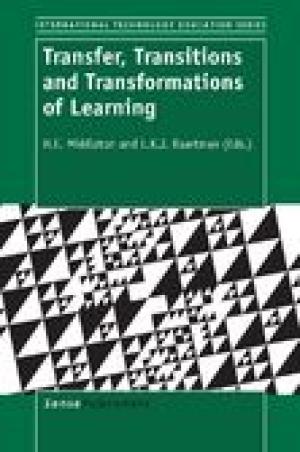
This edited volume of eleven articles explores the concepts of transfer, transitions, and transformation within a focus of educational technology. This title is part of the International Technology Education Series, and the authors mainly come from the field of education. The articles engage a number of fields including: engineering, science, technology, vocational education, nursing, and architecture. The opening chapter provides a literature review of transfer, especially in relationship to transitions and transformation. A successful transfer is defined as “a product where something learned in one context is used to assist learning in another context” (2). The authors explore this concept in regards to motivation, sameness and difference, unproductive transfer, transfer in relationship to transitions and transformation, and transfer as boundary crossing. After this introduction, various authors offer research studies and exploratory essays around these subjects. Several of these studies deserve special mention. Bjurulf’s chapter on the LISA (Learned in Several Arenas) Project explores transfer between work and school within vocational education. This research study uses semi-structured interviews to explore the nature of transfer. Her research supports the conclusion that the transfer of knowledge must be a holistic blending of practice and theory. Another article by Baartman, Gravemeijer, and De Bruijn examines transfer in relationship to technology in non-technical jobs as boundary-crossing skills. They engage transitions, which encompass successfully taking a learned concept from one situation and applying it to another situation. For these authors, and in a number of articles in this book, transfer occurs as a consequence of transitions. Baartman, Gravemeijer, and De Bruijn observe that boundaries should be viewed as learning opportunities as students work to successfully take skills back and forth between school and the workplace. They indicate that it is important to design education for successful transitions that empower boundary-crossing opportunities. Some of the articles, such as Pavlova’s and MacGregor’s, focus upon transformation and transitions, but many of articles do not engage either concept. Both Pavlova and MacGregor engage transformation in terms of the self and as social change. For Pavlova, transformation is demonstrated in both critical self-reflection and emancipatory change. MacGregor focuses on factors that foster or inhibit transformation in teachers as they make the transition from their last year at university to their first year in teaching. MacGregor’s transformation also engages self-reflection as teachers’ identities are transformed by their experiences of teaching and learning. Many of these studies might be considered essays or well-developed literature reviews rather than research studies, because they lack an identifiable research methodology. Overall, the various articles appear to be disconnected and underdeveloped with the exception of the authors mentioned. A final concluding chapter would have been helpful to weave these articles together and draw some overarching conclusions. However, the articles are easy to read, contain good bibliographies, and provide an introduction to the scholarly discourse around transfer. For theological education, transfer is an important aspect of field education. The relationship between theory and practice and methods of creating transfer between the two is critical for the quality of theological education, but the value of this title for theological education is limited. Theological schools with strong pedagogical educational programs or terminal degrees in education might benefit from adding this title to their libraries. Universities with graduate educational programs would want to add this title, especially for those with vocational teacher preparatory programs.
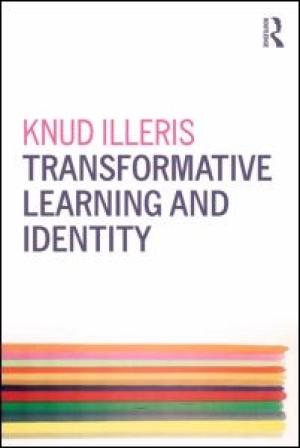
The subject of theology and religion is related to the human desire for and experience of transformative inner experience. Contemporary theological education tends to especially draw students who are internally motivated for their own transformation or for facilitating other’s transformation through their ministry. In this sense, Transformative Learning and Identity touches upon the DNA of theological and religious education. This book is one of the fruits of the author’s research on transformative learning, which developed from another of his books, How We Learn (London, U.K.: Routledge, 2007),a comprehensive account of general learning theory. In Transformative Learning and Identitythe author reviews the theoretical development of the concept of transformative learning through a survey of knowledge and research to “understand and explain how the most rewarding and far-reaching human learning processes take place and why and how they have become so important in today’s world” (xiii). As such, this is not a self-help book with pedagogical strategies. What the author means by “today’s world” carries the foundational assumptions of this book. He calls this contemporary context late-modernity which includes an economic environment that allows upward mobility among classes heavily dependent on the performance of individuals. For him, this is the context of the individualism from which the quest for identity rises. Individualization provides the possibility “to create one’s totally own existence in the very best and personal way – if only one was able to manage all the many life situations and make the right choices all throughout” (62). With such an ideal of individual choices, the responsibility of one’s own accomplishment of the ideal rests on individual will and capacity. Transformation then becomes a crucial task for individuals to accomplish. Illeris’ main conceptualization follows from Jack Mezirow’s understanding of transformative learning – a process of meaning creation, of which elements like individual experience, critical reflection, dialogues, holistic orientation, awareness of context, and authentic relationships are important building blocks. Using this foundation, Illeris surveys the thoughts of several scholars to further exploration of transformative learning. After a brief survey of psychoanalytic theories of change and a cursory survey of emancipating pedagogical theories including Paulo Freire’s critical theory, and one feminist approach developed in the 1980s, he surveys the theories of Yrjö Engeström, Robert Kegan, Peter Jarvis, and Mark Tennant. Through his analysis of the development of various theories in Part I, he concludes that transformative learning “comprises all learning that implies change in the identity of the learner” (40). Thus, he devotes Part II to identity development through the theories of Erik Erikson, Thomas Ziehe, Kenneth Gergen, Mark Tennant, Etienne Wenger, Pierre Bourdieu, Anthony Giddens, and Zygmunt Bauman. In Part III, he examines transformative learning from different standpoints such as developmental stages, the processes of progressive and regressive transformation, motivation and identity defense, personality and competence, and its habitus as in school, work, individual, and society. The author’s intent is to build a more authoritative definition of transformative learning through a theoretical survey of the history of the concept. Along with the survey, his understanding of regressive transformative learning is an important contribution. Regressive transformative learning happens when expected progressive transformative learning is frustrated but still results in identity change. When it happens simultaneously with another progressive transformative learning experience, it can result in identity transformation. There are several points that may need to be augmented to bring out this book’s full potential for religious and theological education. As Illeris writes from his location in Denmark, despite some experience in Teachers College, Columbia University, this work seems to mostly assume a middleclass European or European American context. Hence, it needs to be translated with intercultural sensitivity to find relevance in the context of diversity of cultures, power dynamics, socio-economic classes, and genders in the twenty-first century higher education. A discussion about emancipatory transformation and deeper reflection on critical pedagogies like those of Freire and McLaren would help translate this work into theological school contexts. Another useful dialogue would involve the topic of spirituality. From a Christian point of view, transformative learning can be conceptualized as involving the spiritual engagement of a person. This book is a helpful theoretical resource for those who want to conceptualize impactful teaching and learning experience. I recommend exploring this book with a theological lens in order to dialogue with the different theories surveyed: it could yield helpful dialogical points that could advance the search for realization of transformative learning in theological school contexts.